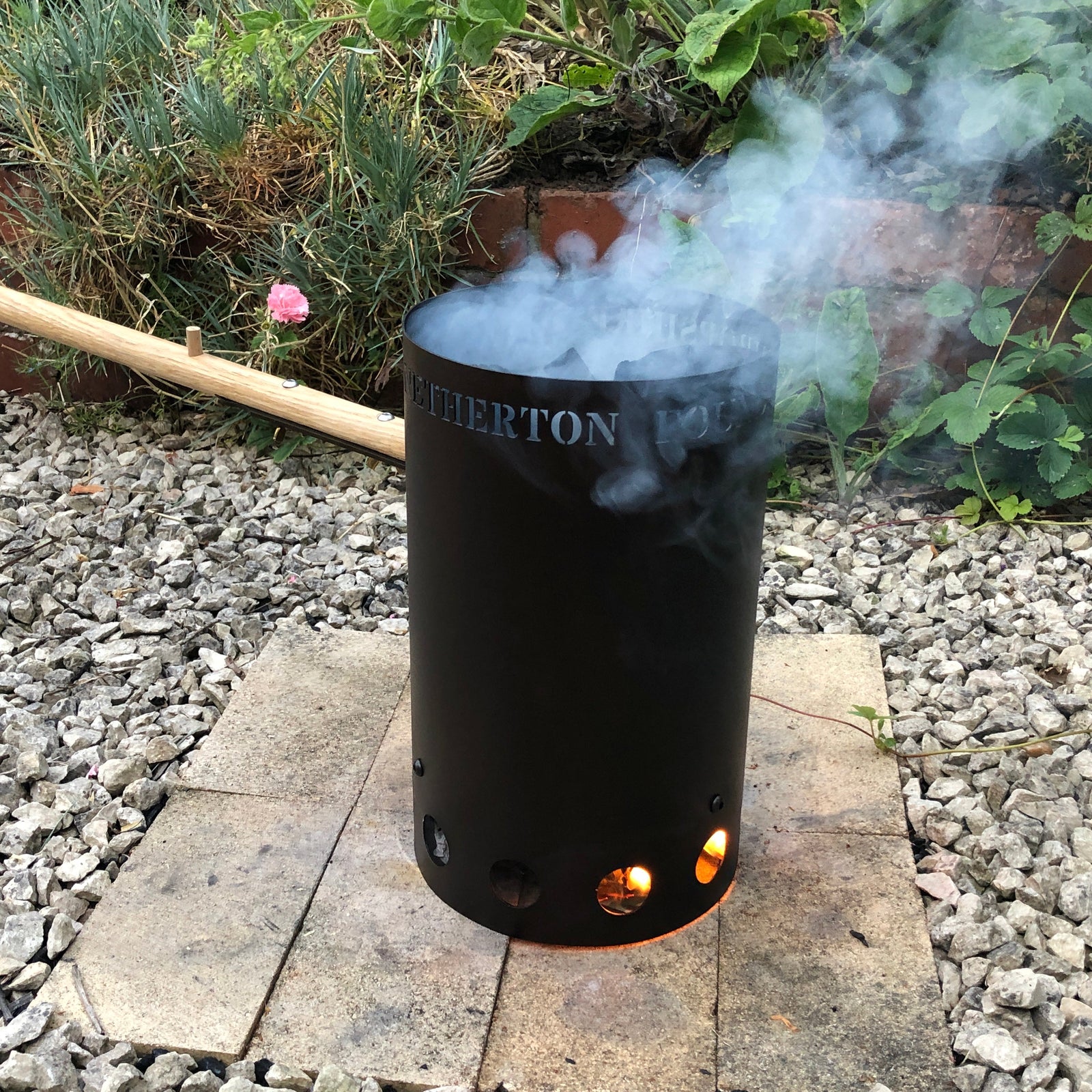Have an enquiry? Call us today on 0333 050 2911
Have an enquiry? Call us today on 0333 050 2911

The Science of Smoke – Why Food Tastes Better Over Flames
October 24, 2025 2 min read
Every warrior knows the truth, food cooked over flame doesn’t just fill the stomach, it stirs the spirit. But why does meat taste richer, bread more satisfying, and vegetables sweeter when kissed by smoke? The answer lies in chemistry, tradition, and the primal connection between fire and flavour.
How Smoke Works in Cooking
When wood burns, compounds like cellulose, hemicellulose, and lignin break down, releasing flavour-packed molecules. These particles cling to food, layering smoky complexity onto the natural taste of your ingredients. It’s chemistry at its most delicious.
Different Woods, Different Flavours
- Oak: Bold, earthy, and powerful, ideal for red meats.
- Beech: Light, clean, and balanced, great for fish and poultry.
- Fruit Woods (apple, cherry, pear): Sweet, aromatic notes that enhance vegetables and bread.
Check out our naturally sourced and processed dried logs, perfect for cooking on anything from our open fire cooking collection
How to Harness Smoke Effectively
Control is everything. Flames burn food, but embers and steady smoke season it. Use seasoned hardwoods, maintain steady airflow, and let the fire settle before cooking. A patient fire makes for unforgettable meals.
Smoke and the Warrior Lifestyle
Open fire cooking isn’t fast food — it’s slow mastery. Each ember teaches patience, each plume of smoke carries history. Learning to harness smoke is learning to slow down, to respect the process, and to share it with those around you.
Final Warrior’s Word
Flame demands respect. Master smoke, and you master flavour — but more than that, you join a tradition as old as humanity itself. That’s why food tastes better over flames: it’s chemistry, ritual, and resilience in every bite.
FAQs
What wood is best for flavour when cooking over fire in the UK?
Hardwoods like oak, beech, ash, and birch are reliable, clean-burning choices. Avoid softwoods (e.g., pine) because sap and resins can give harsh, sooty flavours.
How do I control smoke so food doesn’t taste bitter?
Let the fire burn down to hot embers before cooking, keep the airflow steady, and avoid thick white smoke. Thin, blue smoke gives the cleanest flavour.
Do I need to soak wood chips?
No. Soaked chips create steam, not better smoke. Use dry wood and control heat with ember management and airflow.
What’s the safest internal temperature for meat cooked over fire?
General UK guidance: chicken 75°C, pork 63–70°C after rest, beef steaks by preference (e.g., 55–60°C for medium). Use a thermometer for accuracy.
DEBUG handle:
Continue your journey in the Warrior’s Kitchen: Discover open-fire recipes, ancestral cooking techniques, and foraged feasts built for resilience. Explore A Warrior’s Feast
Subscribe
Sign up to get the latest from the warrior's way blog, promotions and more
